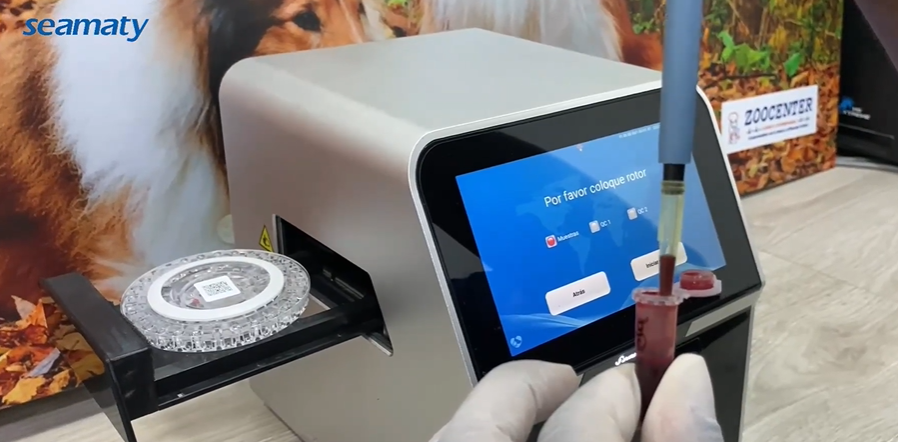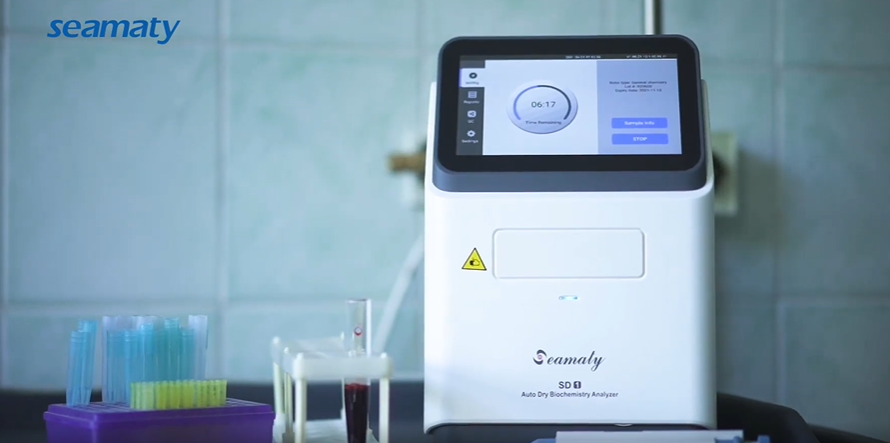Biochemical tests provide a basic assessment of the body's liver function, kidney function, blood glucose, lipids and electrolytes to help doctors prevent, diagnose and treat disease. A sample from a biochemical test that is haemolysed is likely to affect the test results. How can haemolysis affect the biochemical tests?
What is haemolysis?
Haemolysis is the rupture of red blood cells, which releases some of the organic components of the cells into the serum or plasma. After haemolysis, Hb deepens the red colour of the serum or plasma, causing a significant increase in absorbance in the short wavelength range of the visible spectrum (300-500nm). Some enzymes are released from inside the cells to the outside of the cells. These interfere with the results of biochemical tests.
Haemolysis can be in vivo, as in the case of sericosis. Haemolysis can also be ex vivo. It can be caused by unsuccessful blood collection, forceful squeezing or shaking of the collected blood, forceful collisions during transport, or insufficient blood collection to allow for relatively hypotonic anticoagulation, or too thin a blood collection needle.
What are the effects of haemolysis on biochemistry tests? How does it affect biochemical tests?
The effect of haemolysis on liver function
1. Glutamic transaminase (AST)
Haemolysis can increase it, probably due to:
1) AST activity in human red blood cells is about 40 times higher than in serum. After haemolysis, AST is released from the red blood cells into the serum, and the AST activity in the serum increases significantly.
2) The serum deepens in colour, Hb increases the absorbance of the reaction and the test concentration is high.
2. Glutamate transaminase (ALT)
ALT activity in red blood cells is about 7-15 times higher than in serum. Severe haemolysis (Hb about 6.5g/L) can increase serum ALT by about 27%. The increase in ALT levels measured after haemolysis is therefore mainly due to the large release of ALT from the red blood cells. The ratio of ALT to AST shows that ALT is less affected.
3. Glutamyl transpeptidase (GGT)
The level of GGT in erythrocytes is very low and minor haemolysis has little effect on its detection. In severe haemolysis, GGT is significantly reduced due to the dilution of serum by intracellular fluid.
4. Total protein (TP)
Total protein is usually measured by the double condensed urine method, with a primary wavelength of 540nm, and the absorption peak of Hb at a similar wavelength, so high Hb can lead to high results. In addition, the release of Hb from the destruction of red blood cells also increases the protein content of the serum.
5. Total bilirubin (TBIL)
TBIL is commonly measured by the diazo method, which produces a reddish-purple colour azo-bilirubin that is absorbed by haemoglobin at a wavelength similar to its absorption wavelength, resulting in a high result. In addition, the reaction of haemoglobin with diazo reagents may destroy the azobilirubin, forming a negative interference with the test result, but the interference is mild, so haemolysis can make the TBIL result high.
6. Alkaline phosphatase (ALP)
ALP levels may be increased by a factor of 1.1 to 8.0 in haemolysis.
Effects of haemolysis on renal function
1. Urea (UREA)
Haemolysis can increase the absorbance of the blue part of the spectrum by the monoacetate and urease methods, resulting in high results.
2. Creatinine (Cr)
The main reason for this is that creatinine is unstable and susceptible to interference from reducing substances such as vitamin C and ketone bodies. These pseudocreatinine substances also react with picric acid in colour. This pseudocreatinine substance is also more abundant in red blood cells.
Effect of haemolysis on blood glucose (GLU)
Glucose oxidase monoperoxidase coupling method, the reaction can produce red kunimides. Haemoglobin can directly increase the colour of the reaction product, resulting in a higher GLU test result. The peroxidase method for glucose measurement is unstable and susceptible to interference by other substances. For example, vitamin C and glutathione can both compete for H2O2 and lead to negative deviations. Some substances released from the destruction of red blood cells can also interfere with the method and give low results.
Effect of haemolysis on blood lipids
1. Total cholesterol (CHOL)
Experiments have shown that there is no interference if the Hb in the haemolysed specimen is less than 1.5g/L. At higher concentrations there may be interference due to the inherent colour of the Hb.
2. Triglycerides (TG)
Glycerol is measured by the glycerol phosphate oxidase peroxidase method and the acetyl propanol colourimetric method. After destruction of red blood cells, phospholipids on the cell membrane can be acted upon by phospholipase to produce free glycerol, so the result will be high after haemolysis.
The effect on apolipoprotein A (APOA) and apolipoprotein B (APOB) is minor.
Effect of haemolysis on cardiac enzymes
Erythrocytes and platelets are rich in lactate dehydrogenase (LDH). Red blood cell LDH is 160-200 times higher than that of serum, so LDH is most affected. Haemolysis can skew LDH results. HBDH is also significantly higher in erythrocytes than extracellularly and results are also skewed. The effect on CK-MB is also more severe, as haemolysis can increase its levels in serum exponentially.
Effect of haemolysis on blood ions
When measuring electrolytes by ion selective electrodes, K+ is most affected by haemolysis. k+ is the main cation in intracellular fluid and haemolysis can lead to increased K+ concentrations. na+ and CI- are less affected by haemolysis. Ca ion detection is more affected by PH. Erythrocyte PH is 0.1 times lower than serum, so serum PH decreases and serum ionized calcium increases after haemolysis. Inorganic phosphorus is increased by the hydrolysis of organic phospholipids in blood cells after haemolysis, and serum inorganic phosphorus assays are increased.
Haemolysis can have an impact on many biochemical tests and should be improved in the daily practice of health care workers to avoid it as much as possible. In addition, different testing methods can also have different effects on biochemical test results. This requires the testing staff to combine specific analysis with the actual situation, communicate more with clinicians, try to ensure that biochemical samples are qualified and reduce.


